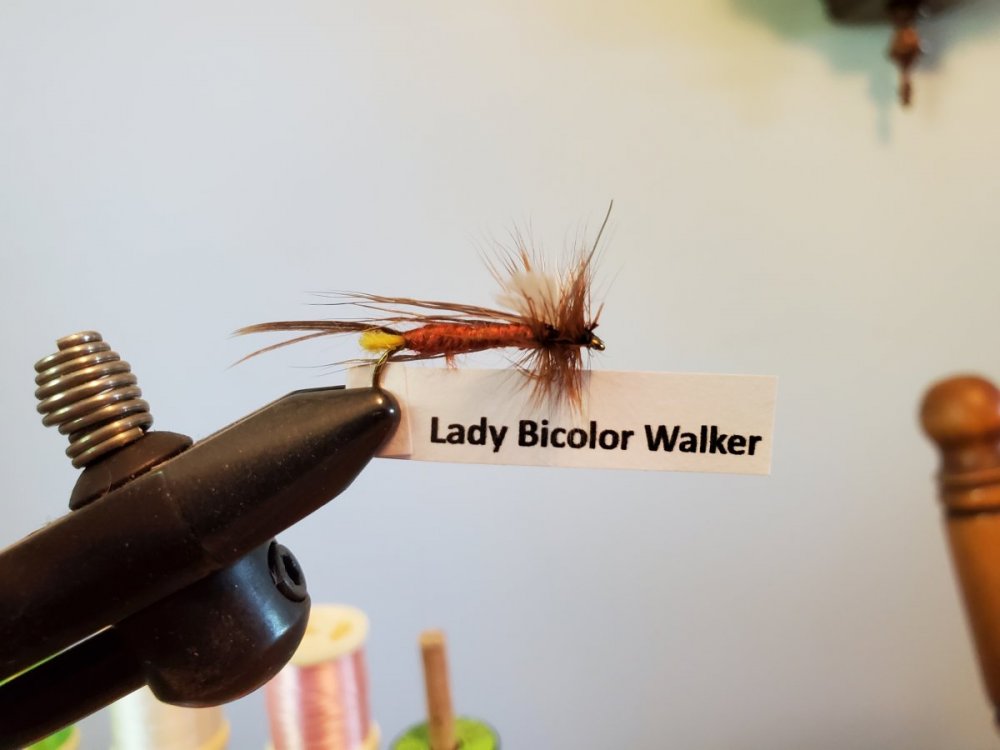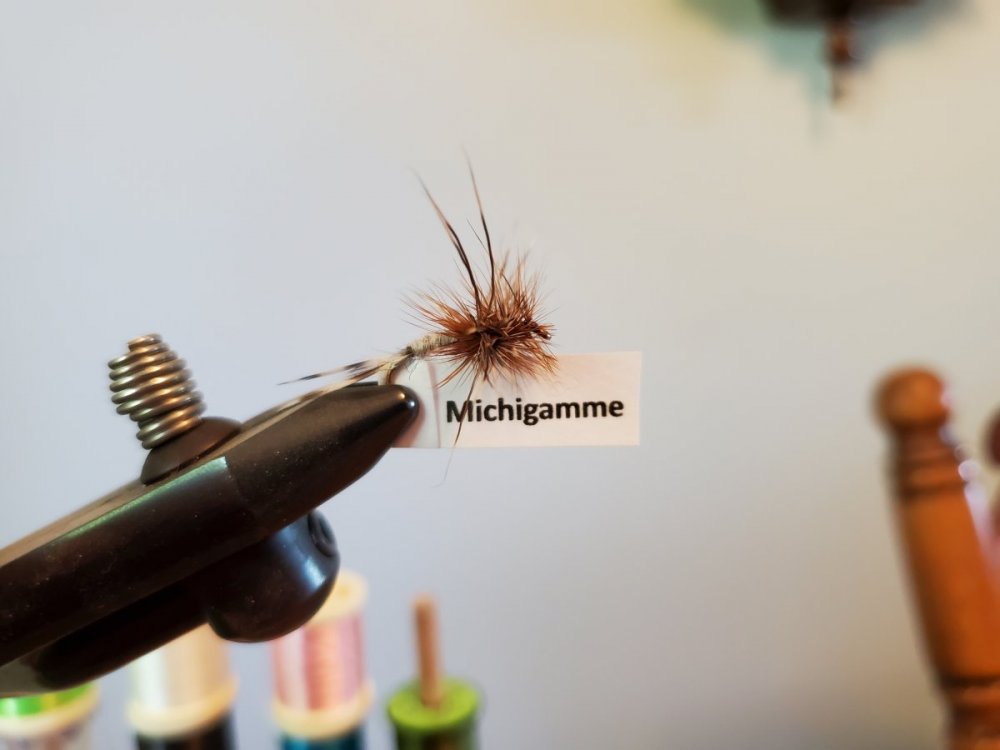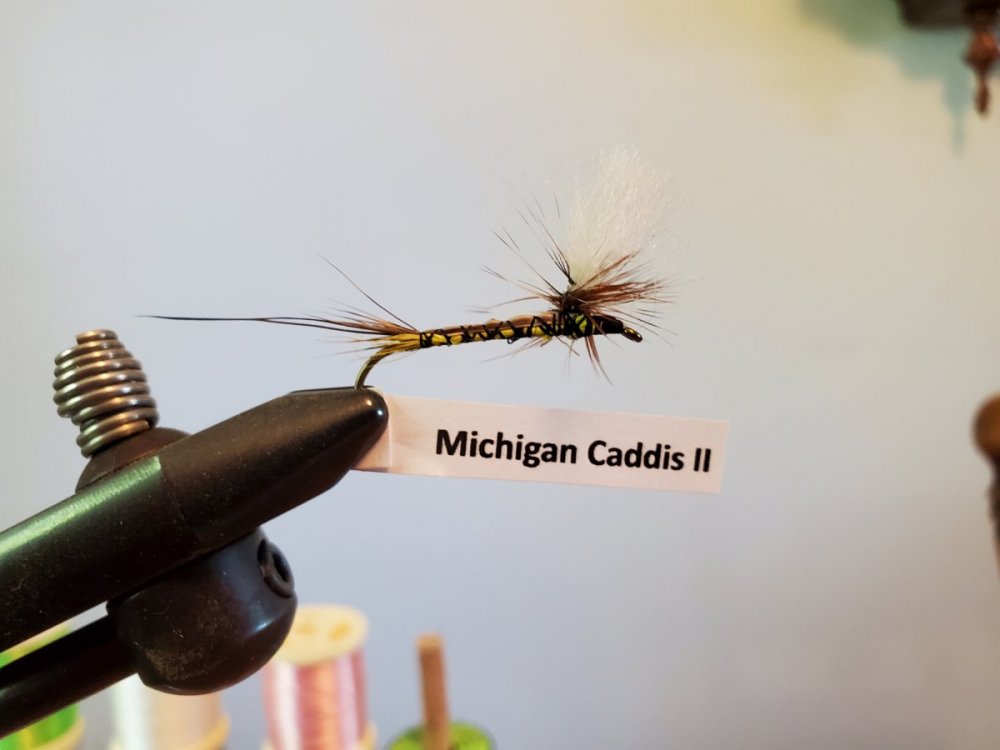Sure,
Hook- 3/0 Eagle Claw Aberdeen Crappie hook(larger pattern). Same hook, size 2 for the smaller.
Thread- 3/0 olive or orange
Weight- medium plain dumbbell eyes, tied in Clouser style(1/3 the shank length behind the hook eye)
Eyes- bent map pins, black, orange or white colored Olive with a permanent marker
Claws- Zonker strips 1/4" or 1/8"
Body-Variegated chenille, ice chenille/crystal chenille, or Estaz, and two feathers either saddle hackle or Schlappen twisted together and wrapped.
1. Tie in dumbbell eyes on top of the shank. I'm tying them in 1/3 the shank length from the eye. You can tie them in closer to the eye if you want a better jigging action.
2. Tie in the eyes. I bend the pins about halfway down the shaft. I tie them high on the shank. I want the eyes to sit just in front of the bend and about half way up the bend, and a V shape to the spread.
3. Tie in the claws on the side of the shank, you want them to sit below the eyes. I like the leather portion of the Zonker strip to be vertical.
4. Tie in the chenille, I wrap it down to eye then make a wrap or two between the eyes. Wrap down the tag end just behind the eyes
5. Tie in the feathers, by the butt end on either side of the chenille, curved side toward the chenille.
6. Put the tips of the feathers and the chenille and twist them together tightly. I try to separate the barbules so they don't clump as I'm twisting them.
7. Wrap the twisted chenille/feathers toward the hook eye. I try to make sure they're facing toward the hook. Doesn't always work. I'll make a wrap either over or under the eyes, then a couple of more wraps toward the eye. Tie it off and trim. Build a small thread head.
Colors- most of the crayfish in the lake I'll be fishing have a mix of olive, orange and tan. So I use a mix of olives(light/dark) and orange(bright/dull) chenille, and feathers, olive, orange and tan(some are barred)
I also color the leather on the Zonker strips, either orange or olive. You don't have to.
Here's a better look at front of one.
View attachment 1641226510
On this one the eyes are orange. I'll admit I've never seen a crayfish with orange eyes. Call them a hot spot. Claws are black-barred crayfish orange zonker strips. I colored the leather orange. The feathers, one is light olive and the other a darker orange, might be black-barred(grizzly)


















